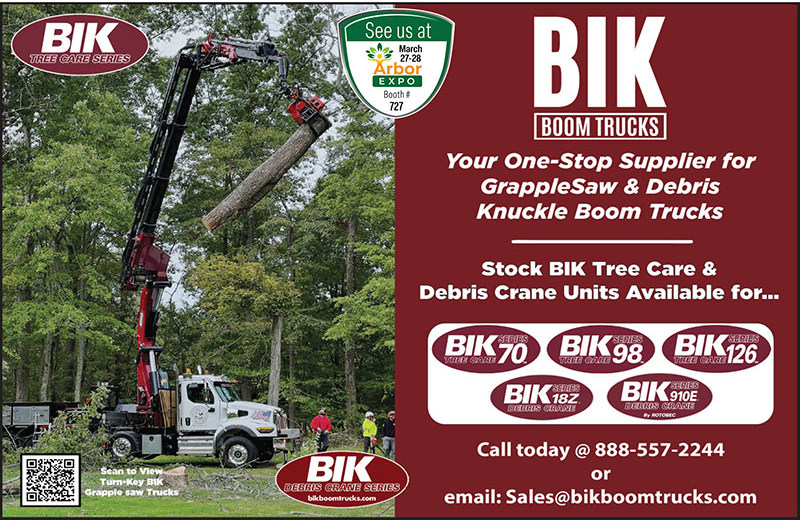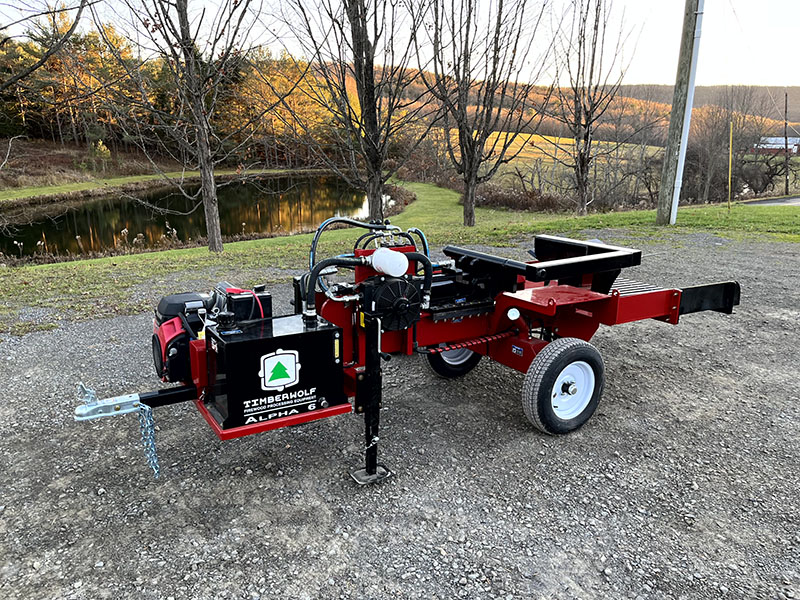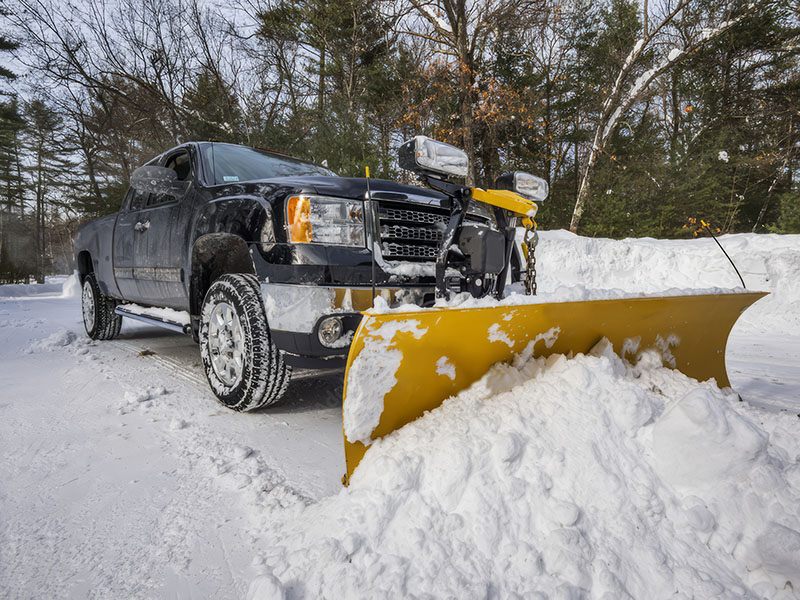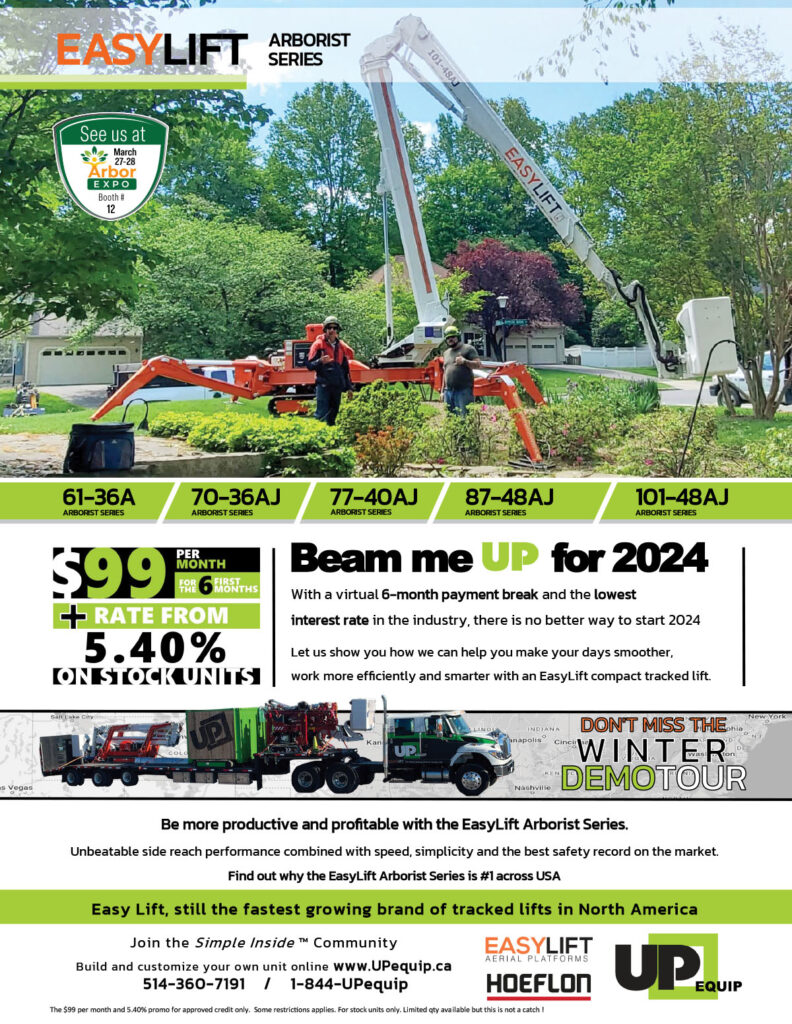Slow Season Side Hustles
Firewood, mulch, and snow removal are just some of the ways tree care professionals make extra cash during the winter months.
Este es nuestro intento de convertir las historias en audio español usando Inteligencia Artificial. Aún así le recomendamos que reconfirme ciertas palabras clave y temas. ArborTIMES no garantiza ni se responsabiliza de la conversión del inglés al español de los relatos.

For many, the slower winter months are a good time to go on vacation and catch up on some rest. For others, it’s a chance to put some serious work into their side hustles.
Defined as work done in addition to a primary job for the purpose of making extra money, side hustling is having a moment. About 39% of Americans have a side hustle and make an average of $810 a month from it, according to a Bankrate comparison survey.
For tree care professionals, side hustles can help cover a dip in income during the slow winter months. They can also provide an opportunity to develop new skills or test the waters before fully committing to a new business.
Firewood processing, mulch, and snow removal are the most common side hustles for tree care professionals. But there are other opportunities that don’t require as much space, equipment, or effort.
Starting a side hustle isn’t easy. It takes careful planning, market research, and good customer service skills. It also requires having a creative eye for opportunity, which is essential for giving you an edge over the competition.
Getting Started
Like any venture, following a basic business plan will walk you through the paces of learning about customers, observing the competition, managing expenses, and identifying sustainable marketing methods. Here are some other tips to get started.
Market Analysis
What is your service and how will it provide value to customers? What need is it fulfilling, and how is it different from others? Knowing this will give you a realistic lay of the land and allow you to identify opportunities that you can take advantage of.
Know Your Customers

Buyer demographics like age and gender can help inform all kinds of strategies, from pricing to marketing. Consider where they are most likely to come across the service you are offering. You can tell a lot about a person from where they shop.
Observe Your Competition
While it can be tempting to replicate what works for others, the trick is finding a way to do it better. Knowing where your competition centers its efforts can help you find underserved markets, discover efficient solutions, and create a better product or service.
Track Your Finances
It’s not enough to have ballpark estimates related to costs and income. Effort to be exact with how much things cost and dig out hidden costs. Make sure you leave enough of a financial cushion to absorb any unforeseen costs, mistakes, or challenges.

Marketing Efforts
Consider how customers are most likely to find you. It may be enough to post simple flyers throughout a neighborhood. Or, perhaps you need a website rich in keywords to attract customers searching online. Maybe you want to develop a following on social media. Wherever you land on marketing, make sure you and your budget can sustain the effort needed to keep it up.
Popular Side Hustles
Because a lot of tree care professionals already have access to trucks and equipment, firewood, mulch, and snow removal are the most common side hustles.
These gigs often require a significant investment in equipment, insurance, and time in order to see rewards. Renting is a great way to test the waters and find out what works.
Firewood
When your business is pruning and removing trees, selling firewood can become a natural side business. Rather than pay for a green waste facility to break down felled trees, why not sell it to people needing firewood?

Finding a space that’s large, dry, and cheap enough to store the wood is an essential first step. Firewood takes at least a year to season before it is ready to sell, making it one of the biggest costs involved with this side gig.
Turning a profit from firewood often depends on understanding what your market wants and then producing it as fast as you can.
Check out hardware stores, grocery stores, or anywhere firewood is sold to get a sense of what sizes sell the most and for how much. Firewood is usually packed in easy-to-carry bundles, quarter cords at 32 cubic feet, and half cords at 64 cubic feet.
Supply is another consideration. Should demand outpace your ability to supply, partnerships with other wood supplies can help bridge gaps. Conversely, they can also cut into profit margins if not thoughtfully arranged.
Investing in the right tools can speed up the production process. While most people can accomplish a lot with a chainsaw and a commercial log splitter, a firewood processor can measure, cut, and split wood in mere seconds. These can range in price from $15,000 to $35,000 and above.
Minimizing expenses is key when selling firewood. Investing in a device to wrap or bundle firewood can increase efficiency, save time and money, and even add an extra appeal for buyers.
Typically, a half cord of firewood can sell for $180 to $280, but the earning potential of firewood can vary depending on geography, weather, and other market conditions.
Mulch
For many tree care professionals, selling mulch is a great side hustle, while others can’t seem to give it away. The success of a mulch side business often depends on where you live. It can also depend on having enough space, the right equipment, and the ability to adjust to customer demand.

Mulch requires enough space to separate, sort, and process branches from trunks and species and colors from one another. Wood usually goes through two grinds to refine the wood and a screening process to remove contaminants such as weeds, dirt, and other debris.
Managing mulch to ensure quality and avoid product loss requires serious work. Mulch needs to be turned and treated regularly to avoid decomposition, mold, freezing, or even fire damage. These can be important to factor in when considering time and labor costs.
Equipment can cut down the time needed to process mulch as well as drive up the costs in terms of investment and maintenance.
While chippers and shredders can accomplish the first phase of processing, a grinder is generally needed to refine the material to a smaller size. Screeners are needed to clean the product and conveyors will help move it around. Coloring mulch requires an additional process that can increase time and cost.
Tastes and needs can differ and rapidly change among customers. While roughly chopped wood chips from a mix of species might work at a power plant, residential customers may prefer more sophisticated bark chips.
Diversifying your client base to include nurseries, utility companies, and municipalities will allow you to ride the changing tides of trends.
Snow Removal
Depending on where you live, snow removal work can help supplement income when the weather limits regular tree care work. It’s also a way to find new ways to provide existing customers with year-round services.

Snow removal work is generally considered risky because it involves high equipment costs, insurance to cover vehicle accidents and injury, and good customer service skills to drum up new business. But even with all that, what if it doesn’t snow?
Snow removal work can be as simple as shoveling a roof and as complex as keeping a highway clear during a heavy storm.
Smaller jobs that focus on sidewalks, paths, small driveways, and roofs usually benefit from specialized equipment such as walk- or ride-behind plows or snow rakes. Larger jobs, such as clearing entire streets, require an all-wheel or four-wheel drive work truck, loader, or skid steer, along with a properly proportioned plow attachment.
Proper maintenance is key to preventing equipment breakdown. Take particular care if relying on a favorite work truck, as the stop-and-go nature of plowing and constant shifting of gears can wreak havoc on a transmission.

The earning potential of snow removal work can vary, depending on where you live. On average, expect to earn $25 to $75 per hour or $200 to $600 per seasonal contract.
Other Side Hustles
One of the best ways to create new sources of income is to tap the customers you already have. Offer discounts during the slower months and make sure they know about any additional service you offer.
Remind springtime customers that you offer services year-round. Ideas include:
• Yard cleanup
• Gutter cleaning
• Pressure washing
• Hauling
• Christmas light installation
• Home repairs
• Landscaping
Sometimes, a friendly call or door hanger at just the right time can encourage them to call on your services.
Final Thoughts
More people are turning to side hustles to earn extra cash, develop new skills, and work out the kinks before starting a new business.
Being successful doesn’t happen by accident. Careful planning can help you get an edge over your competition and identify new opportunities.
Anticipating the needs of customers and finding ways to offer year-round services is a great way to build a solid client base and earn some extra cash.


